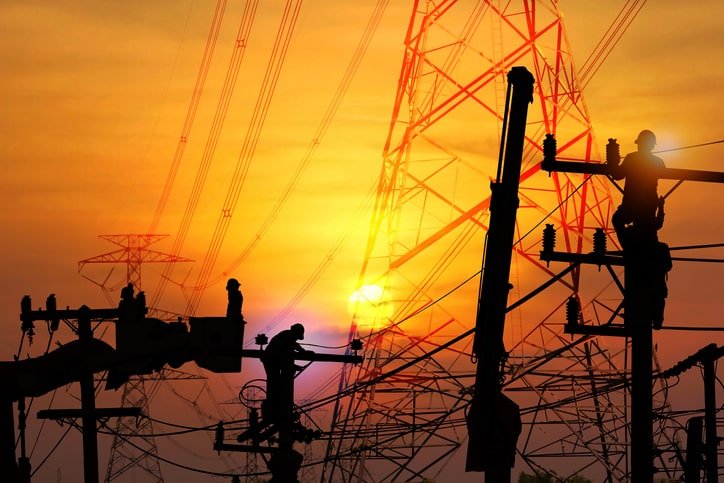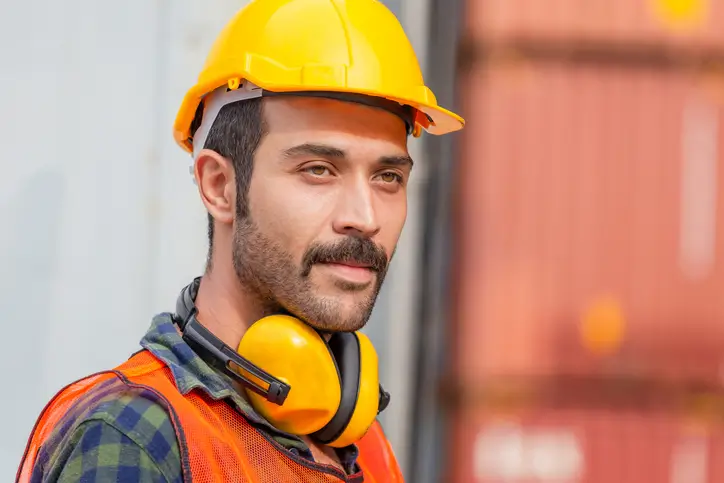Top 8 Construction Safety Topics To Always Keep In Mind
The construction industry is inherently dynamic, with multiple activities occurring simultaneously, ranging from heavy machinery operations to manual labor. In this complex environment, we know that ensuring safety is not just a priority; it becomes a necessity. Construction safety is a multifaceted challenge that demands constant attention and instructs employees to take proactive measures to protect workers from severe hazards to maintain the integrity of the construction project itself.
No offense in saying that construction sites are commonly known as having a higher number of workplace hazards and accidents. That is why conducting regular construction safety meetings is crucial for every company and educates employees about safety rules and regulations. Providing significant knowledge about construction safety topics is essential and it is considered a valuable tool in order to keep your company compliant.
In this article, you will explore a comprehensive array of construction safety topics that cover fundamental safety information, from personal protective equipment (PPE) to the safe operation of heavy machinery. So, scroll down and read this blog thoroughly!
9 Construction Safety Meeting Topics
According to the research conducted by members of the Associated Builders and Contractors who completed the Safety Training and Evaluation Process (STEP), there was a decrease of 85% in total recordable incident rates (TRIR) over the millions of days they worked and the organizations were 68% more secure as compared to the industry standard.
It is important to keep in mind that construction safety topics can vary as per the type of project or unique area. However, here you read specified topics that apply to both the general industry and the construction industry.
Fire Safety
Fire safety is one of the most critical components for construction and general industry. Both industries face new and unique challenges for fire safety due to the presence of flammable material in the air, electrical equipment, and potential ignition sources. That is why establishing robust fire prevention measures is imperative, including the strategic placement of fire extinguishers, the development of emergency evacuation plans, and the implementation of rigorous training programs for workers on fire response protocols.
Fire is the common reason for death and injuries at construction sites, which results in thousands of deaths and the loss of property as well. So, regular inspections of fire safety equipment and considering routine fire drills are necessary to reduce hazardous incidents.
Fall Protection
A fall, slip, or trip is the leading cause of injuries and fatalities in every industry, but specifically at construction sites. Thousands of workers fall every day in their workplaces and these incidents usually result from poor work conditions and invaluable decisions. Sometimes these incidents are possibly caused by a PPE malfunction. That is the reason, it is essentially important to discuss the potential fall hazards at the workplace and talk about the specific jobs that carry a higher risk.
To protect workers from everyday hazards, employers should discuss various fall prevention techniques when working at heights. They need to educate employees about guardrails, safety nets, and personal fall arrest systems, which are crucial components of a comprehensive fall protection plan.
Lockout/Tagout Procedures
In the construction sector, lockout/tagout procedures are essential safety measures meant to avoid unplanned equipment starts or the release of dangerous energy while doing maintenance or repair. Through the use of locks or tags, these methods isolate energy sources and prevent equipment from being activated until the task is finished.
Strict adherence to lockout and tagout procedures is essential for protecting employees from potential damage caused by accidentally activating machinery. Extensive training programs are necessary to teach staff members how to implement lockout/tagout techniques correctly. These programs should emphasize the value of individual accountability, complete equipment de-energization, and isolation verification.
Hazard Communication
A key component of construction site safety is hazard communication, which makes sure that employees are informed of and comprehend any possible risks related to the products and substances they handle. This requires the accurate and constant dissemination of knowledge regarding dangerous substances, training courses, safety data sheets (SDS), and labels.
Hazardous substance labels and signage help employees follow the appropriate safety procedures by raising awareness of possible threats. Employees on construction sites benefit from frequent safety meetings and training sessions on hazard communication, which serve to consolidate knowledge and promote a safety-conscious culture.
Electrical Safety
Construction sites often involve the use of electrical tools and equipment. Implementing strict electrical safety protocols, such as regular inspections, proper grounding, and protection against electrical shocks, is crucial. Moreover, workers should be adequately trained on the safe use of electrical tools, and all equipment must comply with relevant safety standards to prevent accidents and electrocutions.
Construction workers should learn about tips and tricks to detect exposed and damaged wires to avoid injuries and accidents. When employees are familiar with construction safety topics, they have a chance to enforce the culture of safety and help their colleagues mitigate workplace hazards.

Ladder Safety
Ladder safety is a critical consideration in the construction industry, as working at heights presents inherent risks. Comprehensive training on proper ladder usage, including correct placement, secure footing, and maintaining three points of contact, is essential to mitigate the potential for falls.
Overall site safety is also enhanced by making sure ladders are suitable for the task at hand, and have the right weight capacity, height, and material. Establishing a culture of knowledge and accountability among construction workers helps to reduce the risk of accidents and injuries related to working at elevated locations by reinforcing the significance of following specified ladder safety measures.
Falling Objects
One of the most frequent causes of injuries on construction sites is falling objects because there are a lot of things there that aren’t always under control. And it doesn’t have to be a big thing—even a tiny bolt dropped from a height can hurt someone physically or impair equipment. Nonetheless, it is among the most disregarded subjects in construction safety meetings.
A safety conference should be organized at every new building site to go over the individual things that might be moving, falling, or sliding at any given time so that personnel are alert to them. Oftentimes, workers can be kept safe and protected simply by being aware of the hazards discussed in their construction safety meeting.
Material Handling
On construction sites, accidents concerning the handling and storage of materials are frequent. Accidents can be avoided by using safe lifting techniques, offering mechanical aid when needed, and making sure things are stored securely. To reduce hazards, workers should get training on safe material handling techniques, and precise procedures for the handling, transportation, and storage of materials should be set up.
Even though it can seem like a minor aspect of construction safety, your team still has to know how to lift objects correctly and ergonomically to lower the risk of musculoskeletal and back injuries. Talks about construction toolboxes that emphasize safe lifting procedures and when using machines or multiple persons to lift and carry goods make sense and are always beneficial.
Ensure Everyone Is Safe At Their Workplace
Construction safety meetings are highly imperative in constructing a robust culture of safety at the workplace. Employers need to discuss any new and unknown hazard with everyone before they begin working on a project at the new site. They just need to start a new day with crucial safety topics in their meetings and address these issues promptly.
Prioritizing safety in construction is not only a legal obligation but also a moral imperative. By addressing these crucial safety topics, construction professionals can create a safer working environment, reduce the risk of accidents, and ensure the well-being of everyone involved in the construction process. Regular training, communication, and proactive measures are key elements in fostering a culture of safety on construction sites.



